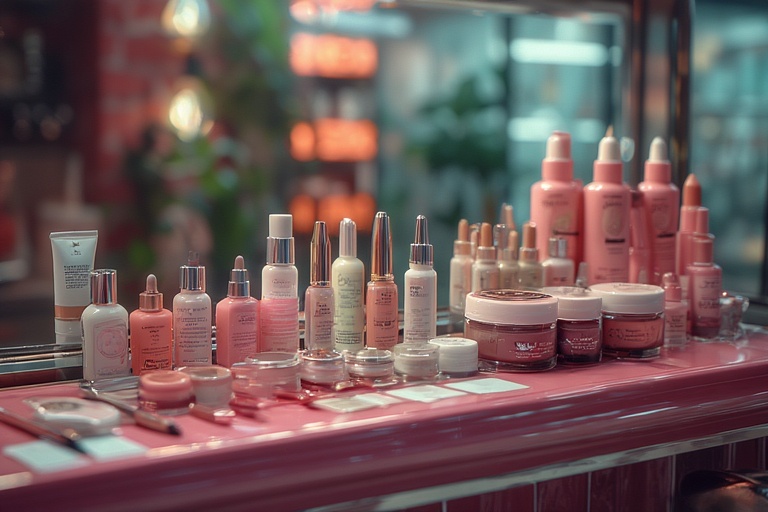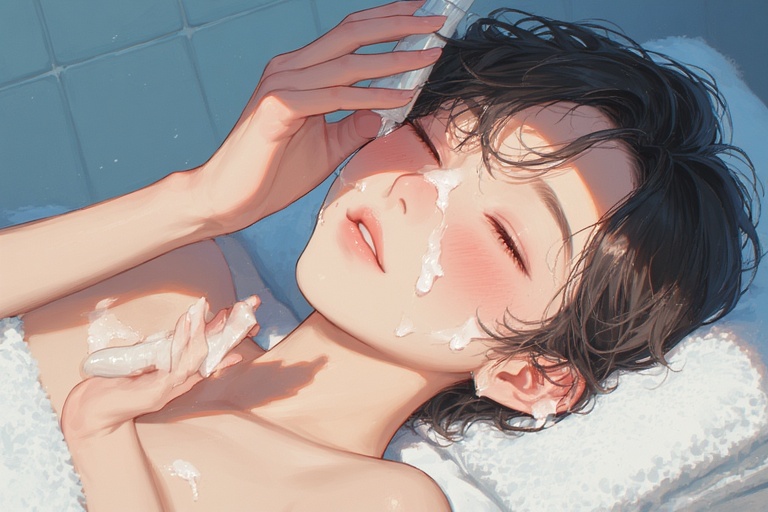The Art and Science of a Radiant Beauty Routine
Navigating the world of skincare can feel overwhelming. With countless products, conflicting advice, and ever-changing trends, it’s easy to feel lost and unsure of where to begin. But what if a genuinely effective approach wasn’t about a 10-step regimen or expensive products? What if it was about a simple, foundational understanding of your skin and a consistent set of habits? This comprehensive guide provides you with the essential beauty routine tips and a clear roadmap to a healthier, more radiant complexion. We will explore not just what to do, but the science behind why it works, helping you cut through the noise to build a lasting and effective routine.
What is a Beauty Routine? A Foundational Guide
At its core, a skincare or beauty routine is the practice of maintaining and improving the health and appearance of your skin. This discipline exists at the intersection of cosmetics, which are used to cleanse and enhance appearance, and dermatology, which focuses on skin health and disease treatment. A basic routine typically includes washing, moisturizing, and protecting the skin from the sun, which are crucial components of daily hygiene that can prevent infections and irritation.
However, a truly effective structured beauty routine extends far beyond simply applying products. It encompasses a holistic approach to wellness. The health of your skin is inextricably linked to your overall physical well-being. Lifestyle factors such as diet, hydration, sleep, and stress management play a significant role in your skin’s vitality. For instance, oxidative stress is widely recognized as a major contributor to skin aging, while a poor diet can lead to various skin pathologies. Lack of sleep has also been shown to worsen conditions like eczema and psoriasis. By addressing these internal factors, a beauty routine becomes a comprehensive strategy for health, not just a cosmetic pursuit.
This foundational understanding reframes skincare as a form of preventative medicine. The skin, as the body’s largest organ, acts as a primary barrier against environmental hazards like germs and harmful substances. By protecting this vital barrier through consistent care, we are not just improving our appearance; we are actively preventing health issues. This elevates the practice from a superficial ritual to a crucial component of preventative health.
More Than Skin Deep: Why Skincare is a Cornerstone of Overall Wellness
The benefits of a consistent skincare routine are both physical and psychological, extending far beyond the surface.
From a physical standpoint, the skin is your body’s first line of defense. It contains nerve endings that alert you to danger, tiny blood vessels that regulate body temperature, and cells that convert sunlight into vitamin D, which is essential for healthy bones. A strong, well-cared-for skin barrier shields your body from invasion by bacteria and other environmental dangers. By maintaining this barrier, a
structured beauty routine is a critical tool for protecting your body’s largest organ.
The emotional and mental health benefits are equally profound. The appearance of our skin is strongly tied to our self-perception and confidence. As acknowledged by experts, good skin can significantly improve self-esteem, while conditions like dry, blemished, or dull skin can lead to self-consciousness and affect confidence. For individuals struggling with conditions like acne, these feelings can lead to depression, anger, and anxiety, as they may feel that others are focused on their skin rather than their personality.
However, the confidence gained from a healthy complexion is not a quick fix. It is the result of a long-term commitment. This creates a powerful, positive feedback loop. Adopting a daily beauty schedule leads to visible improvements in skin health. These improvements, in turn, increase self-esteem and confidence. This enhanced confidence then motivates a person to continue with their routine, making it a sustainable and rewarding practice that builds upon itself over time. The simple act of consistently caring for your skin helps you love what you see in the mirror, and that self-acceptance can radiate into all other areas of life.
Your Step-by-Step Guide to a Structured Beauty Routine
An effective skincare routine doesn’t need to be complex, but it does need to follow a specific order. The cardinal rule of product application is to apply them from lightest to heaviest.
The Golden Rule: Applying Products from Lightest to Heaviest
This fundamental principle ensures that all products are able to absorb properly and deliver their active ingredients to the skin. Thinner, more watery products, such as serums, contain concentrated active ingredients with smaller molecules that need to penetrate the skin to be effective. Thicker, more occlusive products, like creams or oils, are designed to create a protective barrier on the skin’s surface to lock in moisture. If a thick product is applied before a thin one, it can create a barrier that prevents the lighter product from penetrating the skin at all, rendering it almost completely ineffective. By following a clear layering process, you maximize the benefits of every product in your routine.
Your Morning Beauty Schedule: Protect and Prepare
The primary purpose of your morning routine is to protect your skin from the environmental stressors you will encounter throughout the day, including UV radiation, pollution, and free radicals.
- 1. Cleanser: Start your day by using a mild cleanser to remove any dirt, oil, or dead skin cells that may have accumulated while you slept. While this is a foundational step, experts note that if you performed a thorough cleanse the night before, a simple rinse with water may be sufficient, especially for those with sensitive or dry skin.
- 2. Toner (Optional): After cleansing, a toner can help balance your skin’s pH and prepare it to absorb subsequent products. For those with oily or acne-prone skin, a toner with ingredients like salicylic acid can be particularly beneficial for removing residual oil and preparing the skin for treatment.
- 3. Serum: This is the ideal time to apply a serum containing antioxidants, such as Vitamin C or E. These ingredients help protect your skin from environmental damage and give you a fresh, healthy glow. A few drops massaged into your face and neck are all you need.
- 4. Moisturizer: Next, apply a moisturizer to hydrate your skin and maintain its natural barrier. Even those with oily skin need moisturizer to prevent the skin from overcompensating and producing even more oil.
- 5. Sunscreen: This is a non-negotiable step and the most important product in your routine. Use a broad-spectrum sunscreen with an SPF of 30 or higher and apply it to your face, neck, and hands. This step is crucial for protecting your skin from the sun’s harmful UV rays, which are the main cause of premature aging and skin damage.
Your Nighttime Beauty Schedule: Repair and Renew
Your skin naturally regenerates and repairs itself while you sleep, making the nighttime routine the perfect time to address specific concerns and replenish moisture.
- 1. Double Cleanse (Recommended): After a long day, a single cleanse may not be enough. If you wear makeup or heavy sunscreen, a double cleanse is highly recommended. Begin with an oil-based cleanser to dissolve makeup, sunscreen, and surface debris, then follow with a water-based cleanser to remove any remaining dirt, oil, and impurities.
- 2. Exfoliator (1-2x per week): Exfoliation is the process of removing dead skin cells to reveal fresher, more radiant skin underneath. This step can be done with a physical exfoliant (a scrub) or a chemical exfoliant (like AHAs or BHAs). Exfoliating 1-2 times per week is generally enough for most skin types, but this can be adjusted based on your needs.
- 3. Treatment/Serum: With your skin now clean and prepped, it is the ideal time to apply targeted treatments. Retinoids (vitamin A derivatives) are the number one dermatologist-recommended anti-aging product and can stimulate collagen growth, increase cell turnover, and prevent acne. Other serums, like hyaluronic acid for hydration or niacinamide for pore refinement, can also be applied now.
- 4. Moisturizer/Night Cream: Finish your routine by applying a moisturizer. Many people opt for a richer, more hydrating formula at night to support the skin’s natural repair process and lock in moisture while they sleep.
- 5. Eye Cream (Optional): If you are concerned about fine lines, puffiness, or dark circles, apply a small amount of eye cream around the delicate skin of your orbital bone.
Tailoring Your Routine to Your Skin Type
Skincare is not a one-size-fits-all practice. To achieve the best results, your
beauty routine guide must be customized to your specific skin type. The following table provides a clear overview of the key characteristics of four common skin types and the products and habits that will help each one thrive.
| Skin Type | Key Characteristics | Recommended Cleanser | Recommended Moisturizer | Key Ingredients to Look For | Exfoliation Frequency |
| Normal | Balanced, neither oily nor dry. | Gentle cleanser. | Hydrating, lightweight moisturizer. | Antioxidants, Niacinamide. | 1-2 times per week. |
| Dry | Feels tight, flaky, often dull in appearance. | Creamy, hydrating cleanser. | Rich, emollient moisturizer. | Hyaluronic acid, Glycerin, Ceramides. | Gently, 1x per week. |
| Oily | Shiny, visible pores, prone to breakouts. | Foaming or gel cleanser. | Lightweight, oil-free moisturizer. | Salicylic acid, Niacinamide. | 2-3 times per week. |
| Sensitive | Prone to redness, irritation, and allergic reactions. | Gentle, fragrance-free cleanser. | Hypoallergenic, fragrance-free moisturizer. | Chamomile, Aloe Vera, Colloidal Oatmeal. | Very gently, infrequently. |
Common Mistakes & Myths to Avoid
Even with the best intentions, it’s easy to fall into common pitfalls that can undermine your skincare efforts. Learning to identify and avoid these mistakes is just as important as knowing what to do.
Mistake: Skipping Sunscreen, Even on Cloudy Days
The data on sunscreen use reveals a profound disconnect between public awareness and behavior. A 2022 survey found that only 31% of Americans wear sunscreen year-round, with the majority (58%) only wearing it during the summer months. Even more concerning, 61% of Americans never wear sunscreen on cloudy or partly cloudy days, believing it is unnecessary. This behavior is a critical flaw in many a
daily beauty schedule. The problem isn’t a lack of information, but a flawed cultural perception that sun protection is only needed on bright, sunny days.
The reality is that up to 80% of the sun’s UV rays can penetrate cloud cover. This is why experts emphasize that you should never skip sunscreen, regardless of the weather or season. The consequences of this behavioral disconnect are significant: research suggests that as much as 90% of skin aging is caused by the sun, and up to nine in ten cases of melanoma skin cancer could be prevented by safe sun exposure.

Mistake: Over-Exfoliating and Being Too Harsh
When dealing with breakouts or an oily complexion, the seemingly logical response is to scrub harder and more often. However, this is a perfect example of a vicious cycle that makes the problem worse. The research is clear: daily exfoliation can damage the skin’s protective barrier, leading to dryness, irritation, and an increased risk of infection.
When the skin is stripped of its natural oils through harsh or excessive scrubbing, the sebaceous glands go into overdrive to overcompensate. This overproduction of sebum leads to more clogged pores and unwanted breakouts, trapping a person in a cycle where their efforts to solve a problem actually exacerbate it. Instead, it is much more effective to exfoliate gently, and no more than 1-2 times per week.
Myth: Oily Skin Doesn’t Need Moisturizer
A common misconception among individuals with oily skin is that adding moisturizer will make their skin greasier and lead to more breakouts. As a result, many skip this essential step. The truth is that all skin types need hydration. When oily skin is not properly moisturized, it can interpret the dehydration as a sign to produce even more oil to compensate, resulting in a greasier complexion and more clogged pores. The solution is to use a lightweight, oil-free, and non-comedogenic moisturizer that provides hydration without adding excess oil to the skin.
Myth: Expensive Products Work Better
The beauty industry often promotes the idea that a high price tag guarantees superior results. In reality, the effectiveness of a product is determined by its ingredients and formulation, not its cost. A study found that people are often unaware of when products expire, with over a third continuing to use outdated products. This habit is more harmful than a product’s price, as expired products can contain bacteria and lack active ingredients, leading to adverse reactions. Rather than focusing on a brand name or logo, savvy consumers look for science-backed formulas and beneficial ingredients like ceramides, hyaluronic acid, and niacinamide.
Myth: Over-the-Counter Retinol is a Miracle Anti-Aging Product
This is a critical point of nuance that highlights the discrepancy between marketing claims and scientific evidence. Retinoids, which are Vitamin A derivatives, are indeed the number one dermatologist-recommended anti-aging ingredient. They are known to stimulate collagen growth and increase cell turnover. However, a key distinction must be made between prescription-strength tretinoin and over-the-counter (OTC) retinol.
A systematic review published in the Journal of Clinical and Aesthetic Dermatology critically analyzed nine clinical trials on OTC retinol and found the evidence for its efficacy on aged skin to be weak. Four of the trials showed no statistically significant difference between retinol and a placebo. The remaining five trials that showed mild improvements in fine lines were noted to have “major methodological flaws” and were often sponsored by the test-product manufacturers, leading the authors to suggest that the positive results may serve as “tools for advertising” rather than informing clinical decisions.
This is a powerful finding that demonstrates how the beauty industry can rely on consumer perception and a lack of regulation to substantiate claims. While prescription tretinoin is a biologically active retinoid that has been proven to improve the appearance of fine lines and mottled hyperpigmentation, OTC retinol is significantly less potent and requires a conversion process in the body that can limit its effectiveness. This understanding empowers consumers to make informed choices based on trustworthy evidence rather than marketing hype.
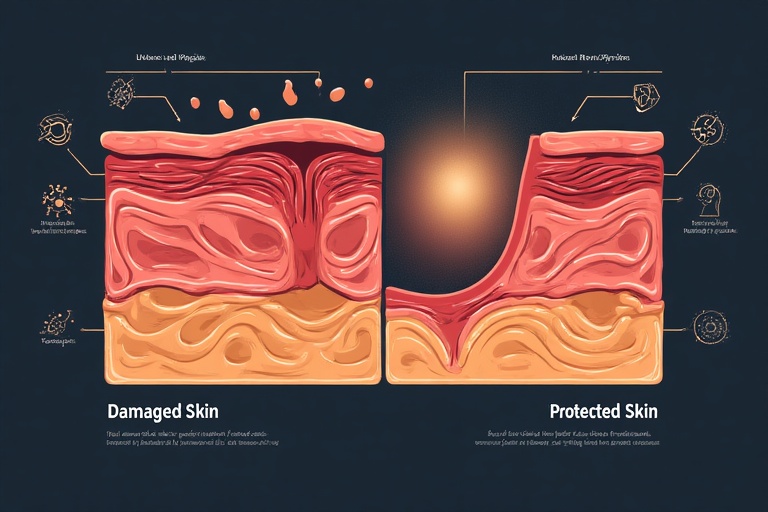
Answering Your Top Skincare Questions
Here are some of the most common questions people ask about their beauty routine guide, answered with clear, expert advice.
What is the best age to start a skincare routine?
Answer: While there is no definitive age, starting a simple, preventative routine in your early twenties is highly beneficial.
Detailed Explanation: The production of collagen and elastin, which are the building blocks of youthful, bouncy skin, begins to decline in the early twenties. By starting with a basic routine—cleanser, moisturizer, and sunscreen—you can help protect against premature aging and maintain the health of your skin before noticeable changes occur.
Do I need different products for morning and night?
Answer: Yes, your morning and nighttime routines serve different, yet equally important, purposes.
Detailed Explanation: The goal of your morning routine is to protect your skin from daily environmental threats like UV rays and pollution. This is why sunscreen is a non-negotiable final step. The nighttime routine, on the other hand, is dedicated to cleansing away the day’s impurities and supporting the skin’s natural repair and renewal processes that occur as you sleep.
Is eye cream really necessary?
Answer: Not always, but it can be a valuable addition if you have specific concerns about the delicate skin around your eyes.
Detailed Explanation: The skin around the eyes is thinner and more delicate than the rest of the face, making it more susceptible to fine lines, puffiness, and dark circles. Eye creams are specifically formulated to address these issues and often have a lighter texture that is gentle on the area. However, if your existing face moisturizer is gentle and effective, you may not need a separate product.
How often should I exfoliate?
Answer: For most skin types, exfoliating 1-2 times per week is the ideal frequency.
Detailed Explanation: While exfoliation is essential for removing dead skin cells and unclogging pores, over-exfoliation can damage your skin’s protective barrier and lead to irritation and breakouts. Individuals with oily or acne-prone skin may benefit from exfoliating 2-3 times a week, while those with dry or sensitive skin should exfoliate less frequently to avoid stripping their skin of natural oils.
How do I know my skin type?
Answer: Look for common characteristics, but for a definitive answer and personalized advice, it is always best to consult a licensed dermatologist.
Detailed Explanation: As a starting point, you can assess your skin for common characteristics. Dry skin often feels tight and has flaky patches, especially on the cheeks. Oily skin tends to be shiny and soft or greasy to the touch. Combination skin features a mix, with an oily T-zone (forehead, nose, and chin) but dry cheeks.
What is a basic skincare routine?
Answer: A cleanser, moisturizer, and sunscreen are the three most essential products that form the foundation of a healthy structured beauty routine.
Detailed Explanation: You do not need a complex, 10-step routine to achieve healthy skin. A simple regimen is often the most effective. Cleanser removes dirt and impurities, moisturizer hydrates and protects the skin barrier, and sunscreen prevents sun damage, which is the leading cause of premature aging. A consistent routine with just these three products can deliver remarkable results.
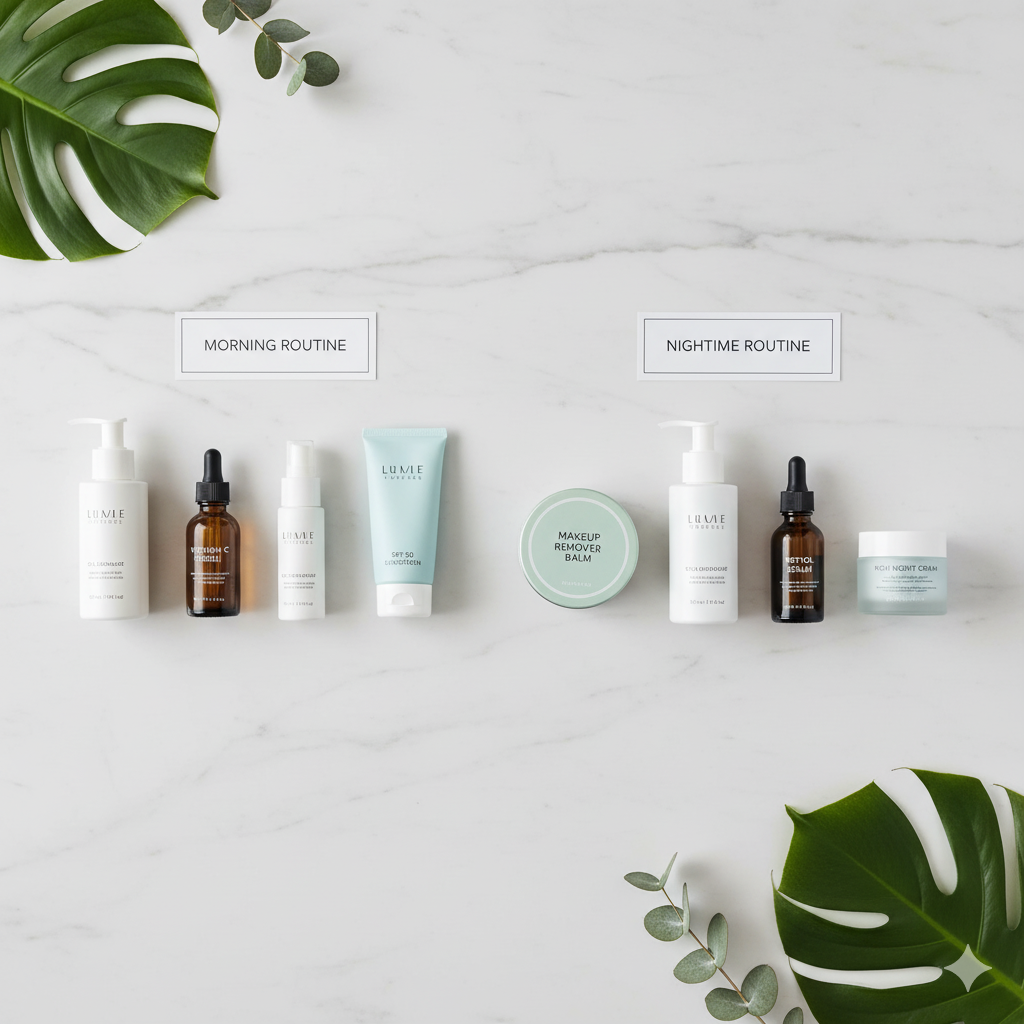
Final Thoughts: Consistency is Your Key to Lasting Radiance
A simple, consistent routine will always be more effective than an extravagant, inconsistent one. The most crucial takeaway from any
beauty routine guide is that lasting results come not from a single product or a one-time treatment, but from a habit of daily care. By building a sustainable daily beauty schedule that prioritizes your skin’s health and protects it from harm, you are investing in a lifetime of radiance and self-confidence.
Start your journey today by choosing a few key products that work for you and committing to using them every single day. The best time to start taking care of your skin was yesterday; the next best time is right now.
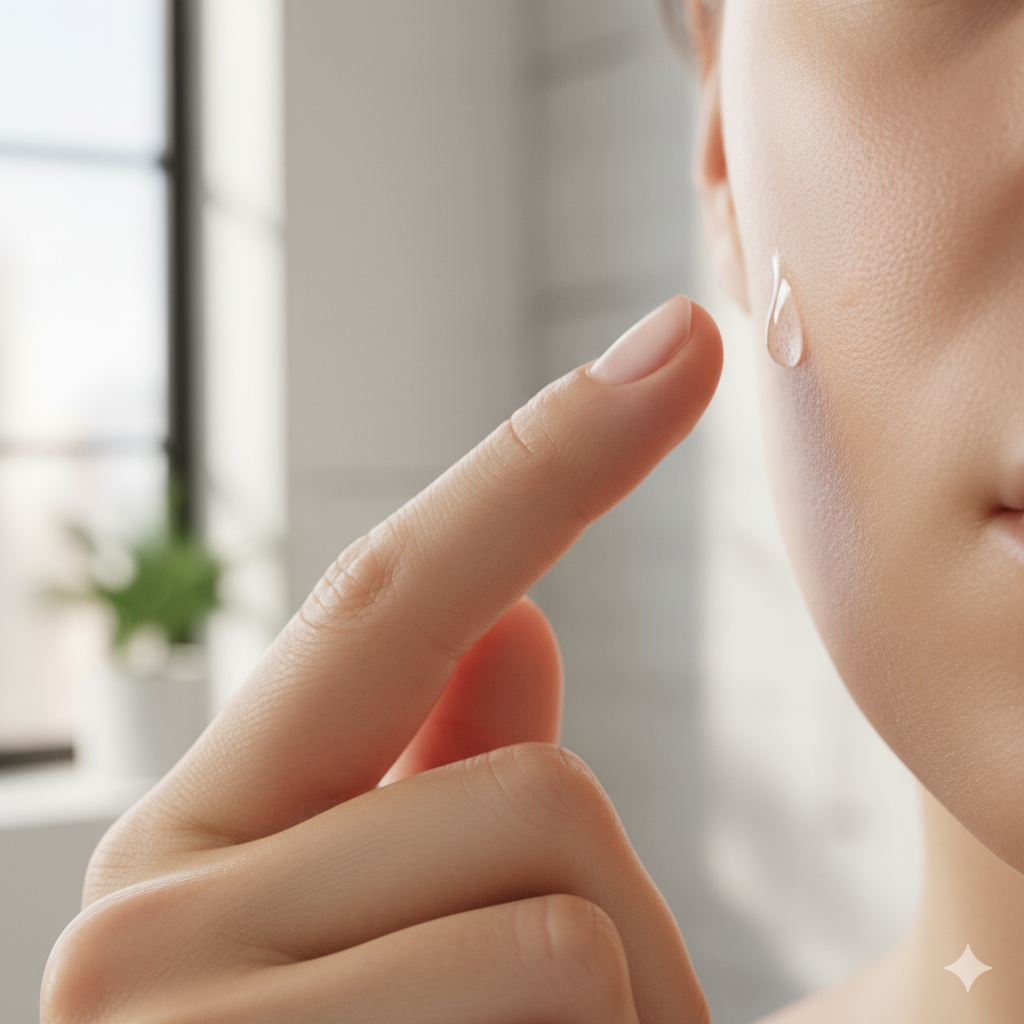
Relevant Hashtags: #skincare #beautytips #skincareroutine #beautyroutine #healthyskin #skincareguide #dermatologisttips #selfcare #glowyskin
Link
- Why Skincare Is Important
- Keep Your Skin Healthy
- Five Benefits Of Following A Long-Term Skin Care Program
